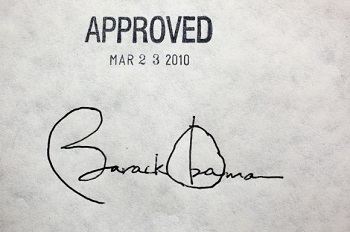 A great deal can be learned about the state of dental care in the United States by contemplating the Abominable Snowman in the Christmas-time classic Rudolph the Red-Nosed Reindeer.
A great deal can be learned about the state of dental care in the United States by contemplating the Abominable Snowman in the Christmas-time classic Rudolph the Red-Nosed Reindeer.
First of all, he lived in the rural expanses of the North Pole where dentists were clearly few and far between – similar to most rural areas in the United States.
In fact, wherever there are 5,000 or more people per dentist the Department of Health and Human Services calls it a “Health Professional Shortage Area,” and there are so many of them across the country it would take 7,300 additional dentists to address the problem. Even then, each would have 5,000 patients, so just to look at each one for ten minutes twice a year would require more than thirty hours a week, meaning that adding all those dentists would only start a solution.
No Appointment Available
And the Abominable Snowman clearly hadn’t seen a dentist in quite a while, as is the case with a huge majority of Americans.
Overall, 56% of adults haven’t seen a dentist in six months, with minorities and the poor, as usual, faring worse: 66% of blacks and 69% of Hispanics haven’t been, as well as 69% of those on Medicaid. Among people with no insurance that goes up to a frightening 80%.
No wonder tooth decay is one of the most widespread diseases in the country, with fully 16% of children and 24% of American adults enduring untreated cavities.
And that’s just the tip of the iceberg when we consider how powerfully poor dental health can impact a person’s overall wellbeing. Dr. Charles Norman, president of the American Dental Association, points out that gum disease can exacerbate diabetes and can increase the chances of a stroke and that poor hygiene can cause serious conditions later in life, adding that the inability to chew properly makes it difficult to eat a nutritious diet
There are other impacts as well. As for the Abominable Snowman, we find out that tooth-ache pain causes him to be abominable in the first place. One can imagine that a portion of the abominableness going on in American workplaces and families could have the exact same source.
If he’d had the option, the Snowman probably would have gone to the emergency room. Last year 2.1 million people showed up at ERs with dental problems, and more than 80% of those problems could have been prevented by a dentist. They all could have been treated by a dentist as well, but since most ERs have no dental facilities and dentist on call, most of those people got pain medication and antibiotics before they were sent away. Nationwide, these visits cost in excess of $2 billion a year.
Then Came the Affordable Care Act…or Not
One would think that the Affordable Care Act would have confronted this problem head on, but not quite.
Adults were not required to purchase dental insurance, and less than 1% of the plans available on the exchanges include it. Even the ones that did usually offered policies that would help with routine care while offering little assistance in the case of an emergency – which is sort of the opposite of what insurance is supposed to do. In fact, dental plans were not included in the out-of-pocket maximums the Act placed upon medical expenses, so not only are co-pays higher than ever, the overall exposure of insured people is also higher than ever.
Stranger still, that while the Act required medical insurers to cover pre-existing conditions, dental insurers didn’t have to meet that requirement, so people with existing problems have no reason to pursue insurance anyway.
And one final flaw: a huge group of employed people gets medical insurance through their employer, but no dental insurance. People in that situation are not allowed to use the exchanges to get their dental insurance, making it even less affordable.
The Act requires dental insurance only for minors, and even that is implemented strangely. Pediatric plans are sold separately and the experts analyzing the exchanges claim that they appear to be optional. Worse, no financial support is offered to help buy it.
The chair of the American Academy of Pediatric Dentistry’s Council on Dental Benefit Programs, Dr. Paul Reggiardo, lamented to the New York Times, “It’s letting kids down in my mind, and it is clearly inconsistent with congressional intent. The intent was to include all children. Now it only includes some.”
The American Dental Association expects an additional 8.7 million children to visit the dentist for the first time between now and 2018. Several states intend to revisit at least the pediatric part of the problem in 2015, and many advocates hope that “embedded plans,” which would put an end to the medical-dental divide, will carry the day.
Possible Solutions on the Way
Hopefully state legislatures and Congress will take a more enlightened approach than did Santa Claus. When Hermey the Elf rebelled against Santa’s labor policies and announced his intention to become a dentist, Santa rejected him, despite the obvious need for professionals in such a remote area.
The story may have ended tragically if Hermey hadn’t brought his dental tools along with him. Shortly after joining up with Rudolph and his prospector friend Yukon Cornelius, the Abominable Snowman confronts them, roaring with his mouth wide open. And that’s all Hermey needs to make the correct diagnosis that the Snowman has a tooth-ache, which he treats right then and there.
him. Shortly after joining up with Rudolph and his prospector friend Yukon Cornelius, the Abominable Snowman confronts them, roaring with his mouth wide open. And that’s all Hermey needs to make the correct diagnosis that the Snowman has a tooth-ache, which he treats right then and there.
It’s possible that something similar may happen in the United States. “Dental therapists” (who certainly have more training that Hermey did) may become integral to the delivery of routine care, especially in rural areas. Minnesota led the way in 2009, Alaska followed soon afterwards, and many analysts believe that these practitioners may be key to providing routine hygiene and simple procedures at an affordable rate.
And hospitals in North Carolina and Maine may have come up with a solution to the emergency room problem as well. Recognizing that dental emergencies are better handled in a dental office, the hospital’s emergency room now refers dental emergencies to dentists – and pays for the treatment if the patient has no insurance. One hospital even set up a dental clinic in-house, and in one community more than sixty percent of the local dentists came together to deliver over a $1 million in care to about 4,000 people. Dental cases in the ER dropped as much as 70%
Next Steps for You
Hermey clearly changed the Abominable Snowman’s life. The next time we see him, thirty-
three years later in Monsters Inc., he’s a smiling, well-adjusted and clearly pain-free sno-cone aficionado who provides James P. Sullivan (the shaggy purple monster) and Mike Wazowski (green with one eye) a place to stay after they’re thrown out of the monster’s world.
This may give us an indication of how much reforms in dental insurance might pay off in our world. As your share of those 8.7 million children find their way to your practice, make sure your staff knows three things:
First, that Hermey has graciously agreed to help the American Dental Association teach children about dental care, and that ADA President Maxine Feinberg has officially named him a Dental Do Gooder.
Second, that since practically everyone finds insurance difficult to understand you’ll go the extra mile to explain what’s covered, if anything, and what your patient’s out-of-pocket expense will be.
And third, that by working with CrossCheck you can help people stretch out a large co-pay or fee over a few paychecks without financing. This may be the killer service during this transitional period, and we look forward to telling you about it.



